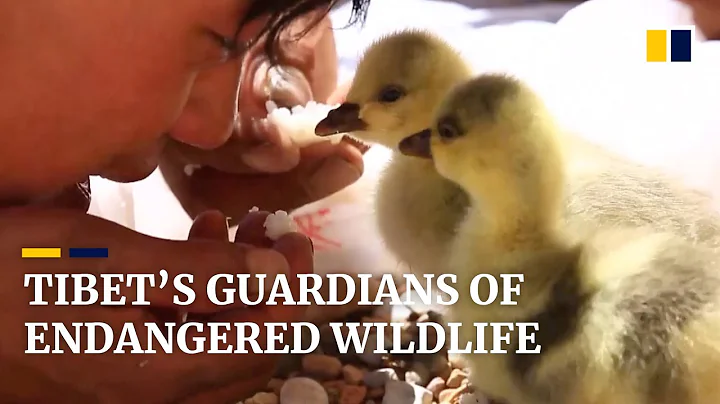Because snakes are cold-blooded animals. The most obvious characteristic of cold-blooded animals is that they cannot rely on the temperature of their blood to regulate their own body temperature. Cold-blooded animals can only regulate the dissipation of body heat through their own behavior or absorb heat from the external natural environment. to increase body temperature. Therefore, cold-blooded animals like snakes can only survive at suitable temperatures. Snake resources are extremely abundant in tropical areas because the temperature is suitable for the growth of snakes. Snakes living in temperate zones need to hibernate in winter to survive the cold. In winter, those icy kelp areas and plateau areas can be said to be restricted areas for snakes to survive. Snakes will die directly if they are exposed to low temperatures for a long time.

In many people’s perceptions, Tibet belongs to the hinterland of the Qinghai-Tibet Plateau , with an average altitude of more than 4,000 meters and an average temperature between 14 and 16 degrees. The most suitable temperature for snakes to survive is around 25 degrees. From the perspective of altitude and temperature, many people believe that Tibet is undoubtedly a restricted area for snakes to survive. Snakes can only survive below the snow line .
So many people think that there are no snakes in Tibet? In fact, Tibet not only has the highly venomous king cobra, but also the unique hot spring snake in Tibet.

King cobras in Tibet are mainly distributed in southern Tibet, which is located at the southern foot of the Himalayas. The local climate is warm and humid, with sufficient daily rainfall and abundant rainfall. Southern Tibet is the northernmost tropical region in the world, and the climate there is similar to The climate in South Asia and India is similar, with high temperatures and rain all year round. Southern Tibet has rich wildlife resources. King Cobras naturally have ample food sources in these areas. King cobras living in southern Tibet do not have the habit of hibernating even in winter. The border police once encountered a 2-meter-long king cobra while patrolling the border in winter. Officially, because of the existence of large venomous snakes like king cobras, This shows the diversity of local species and also confirms that the local ecological environment has not been damaged by humans.
In southern Tibet, there are not only large venomous snakes such as king cobras, but also Tibetan bamboo-leaf green snakes, cobras , white-headed vipers , northern Burmese native spearheads , Medog green snakes , white-lipped vipers. According to statistics, there are 81 species of snakes living in Tibet, 31 of which are feared venomous snakes.

Popu Bamboo Leaf Green
Tibet not only has the King Cobra, the largest venomous snake in the world, but also some special snakes. In 2013, South China Institute of Endangered Animals and Kunming Institute of Zoology, Chinese Academy of Sciences scientific expedition personnel discovered a new species in the Mount Everest National Reserve - Mount Himalayas . The discovery of this venomous snake completely overturned mankind's view of the world. The old impression of the desolate third pole, it turns out that snakes are also distributed in the Mount Everest area. The Himalayas' spearheaded viper has a ferocious temperament. The largest individual is 1.5 meters long. It lives in the Everest Reserve, especially at the southern foot of the Himalayas. Due to long-term isolation at the southern foothills of the Himalayas, this area still preserves a very complete original natural environment and food chain. The discovery of the Himalayas completely overturned the impression that the Himalayas were a "deserted, species-scarce" third pole region in the world.

Himalayan spearhead
Snakes exist even in the Tibetan Plateau inland areas, and that is the Tibetan hot spring snake, a snake unique to Tibet. This kind of snake belongs to a non-venomous snake of the family Colubridae. They mainly live in hot springs on the top of snowy mountains at an altitude of 4,300 meters. They mainly live near hot springs with rich geothermal resources. They are mainly distributed in Lhasa, Tibet. In places with rich hot spring resources such as Dangxiong and Gyangze, the heat brought by the geothermal energy near the hot springs can be enough to keep hot spring snakes at a normal body temperature. Of course, their range of activities is limited to the vicinity of the hot springs. Hot spring snakes mainly prey on small rodents in hot springs, as well as some petite alpine frogs. These alpine frogs can be said to be the food source prepared for hot spring snakes.

Hot spring snake
It is precisely because hot spring snakes have high requirements for the living environment, and hot spring snakes can hardly survive outside their original environment. In addition, hot spring snakes have poor reproductive capabilities. Normal female snakes can only produce 6 eggs at a time, and The normal hatching rate of hot spring snake eggs is much lower than that of normal snake eggs. These factors have resulted in the extremely rare population of hot spring snakes, which cannot be reproduced in captivity. In order to further protect hot spring snakes, the country will list Tibetan hot spring snakes, Yunnan hot spring snakes and Sichuan hot spring snakes as first-level national protected animals in 2021.
.





















![Anitta - Envolver [Official Music Video] - DayDayNews](https://i.ytimg.com/vi/hFCjGiawJi4/hq720.jpg?sqp=-oaymwEcCNAFEJQDSFXyq4qpAw4IARUAAIhCGAFwAcABBg==&rs=AOn4CLAZU0gNB8pzGZtcYTqV5TTImjkX3w)